#adding some hashtags so this will maybe reach more ppl
Text
hi transgender website does anyone have recommendations for books/essays/articles that will make you feel seen as a trans person. particularly looking for something that speaks to the ftm experience but any kind of trans writing is good.
if ur a trans writer by all means feel free to plug ur own stuff. i just need to feel less isolated.
#vince txt#adding some hashtags so this will maybe reach more ppl#trans#transgender#ftm#mtf#queer#genderqueer#lgbt#lgbtq#trans rights#trans writers
37 notes
·
View notes
Text

I posted 25.803 times in 2022
133 posts created (1%)
25.670 posts reblogged (99%)
Blogs I reblogged the most:
@purlturtle
@queenofcrabs
@aquitainequeen
@existentialvoidofexistence
@toboldlynerd
I tagged 10.503 of my posts in 2022 (41%)
#x – 527 posts
#goncharov – 443 posts
#esc'22 – 361 posts
#queen dead – 298 posts
#*cue crabs* – 186 posts
#threshold day – 179 posts
#q – 177 posts
#mine – 149 posts
#andromaquynh – 144 posts
#tog art – 141 posts
Longest Tag: 137 characters
#anyway apart from lotr i think any fictional death gets a ¯\_(ツ)_/¯ it's fictional and them not-dying is just as fictional so idc
I gave 1 gift in 2022
🦀
My Top-Posts in 2022:
#5

54 notes – posted 24. Juli 2022
#4
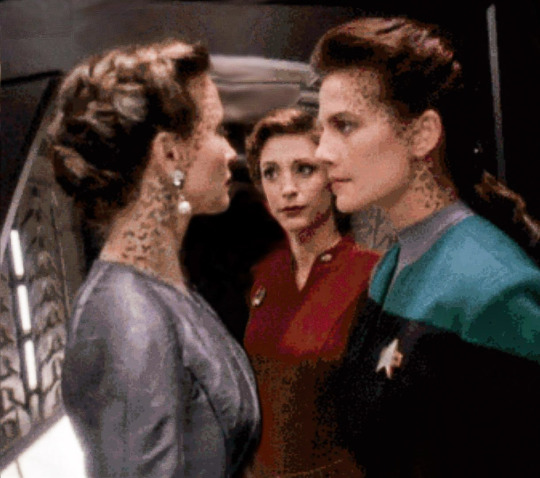
58 notes – posted 2. August 2022
#3
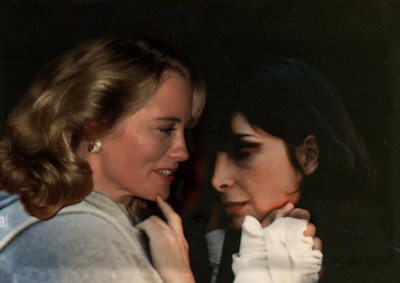
New photo of Cybill Shepherd and Talia Shire as Katya and Sofia in Goncharov (1973) resurfaced! Had the two characters originally been supposed to have a kiss scene that was later cut from the movie?
68 notes – posted 25. November 2022
#2
Ot3 fake-dating fanfic idea:
Your main character has a top secret job that they have to travel a lot for - when asked by their date why they had to leave in a hurry, in a panic they said it's because they're actually poly/ in an open relationship and have to go home to their partner. They don't expect to get a second date after that, but lo and behold actually the date calls back and over time they get into a mostly long-distance relationship - in which the lies about their 'other relationship' quickly pile up...
Now the date wants to meet the other partner, maybe because the main character made them seem much too nice - and now they have to pretend to be in a relationship with their co-worker....
Please @ me if anybody writes this, no matter the fandom!
86 notes – posted 23. January 2022
My #1 of the year 2022
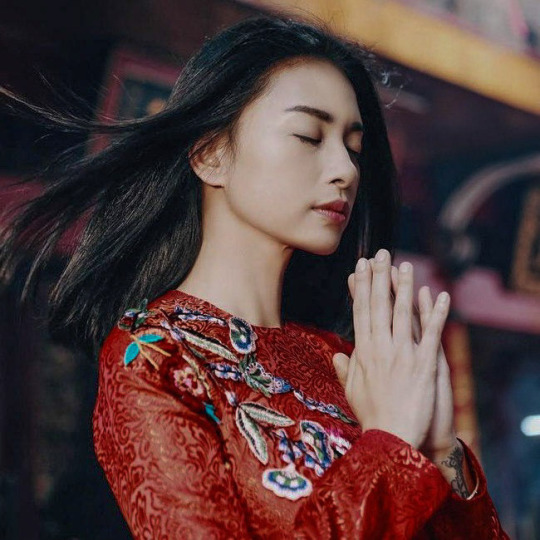
221 notes – posted 18. August 2022
Hol dir deinen Tumblr-Jahresrückblick 2022 →
~~~~~
Because obvs it doesn't show the full posts, espesh with moodboards, I added screenshots of the actual top posts below, plus some other interesting facts!
What I'd also love to have on the year in review is: what posts did I reblog the most times? What was my longest reply conversation? How many times did I reach post limit, and how often did I change my blog heading/description?
Wbu guys, any more ideas? :D
~
The one-pic previews for the moodboards re also rly pretty xD but here's the real deal
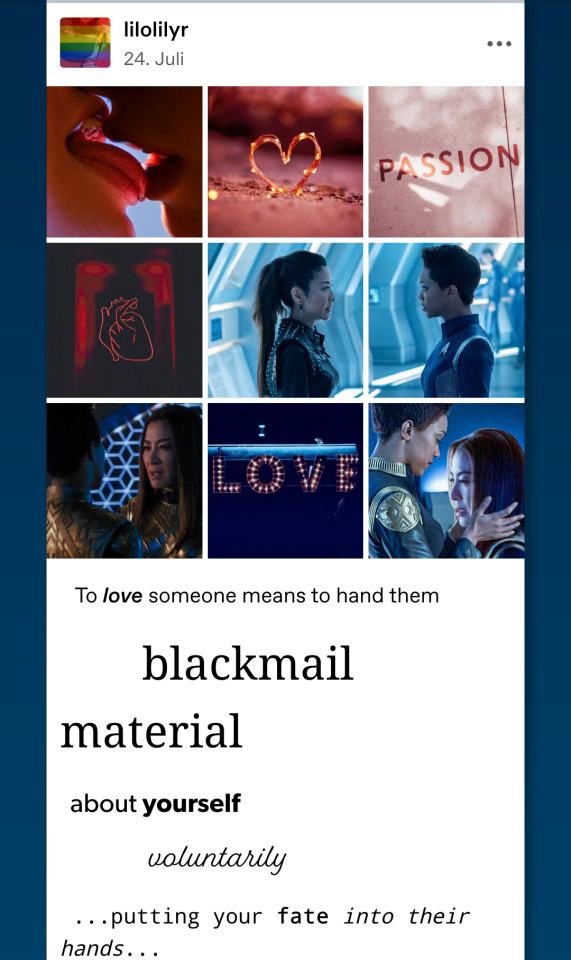
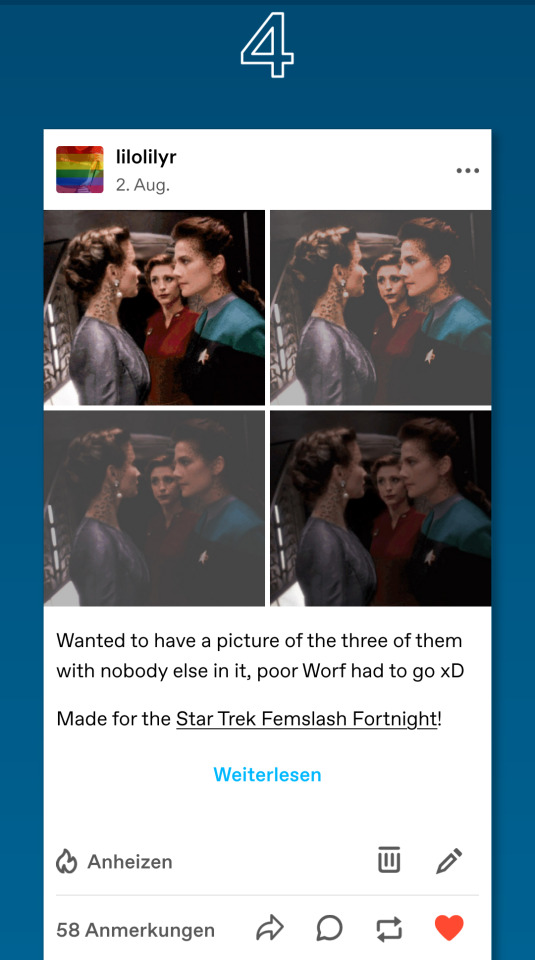

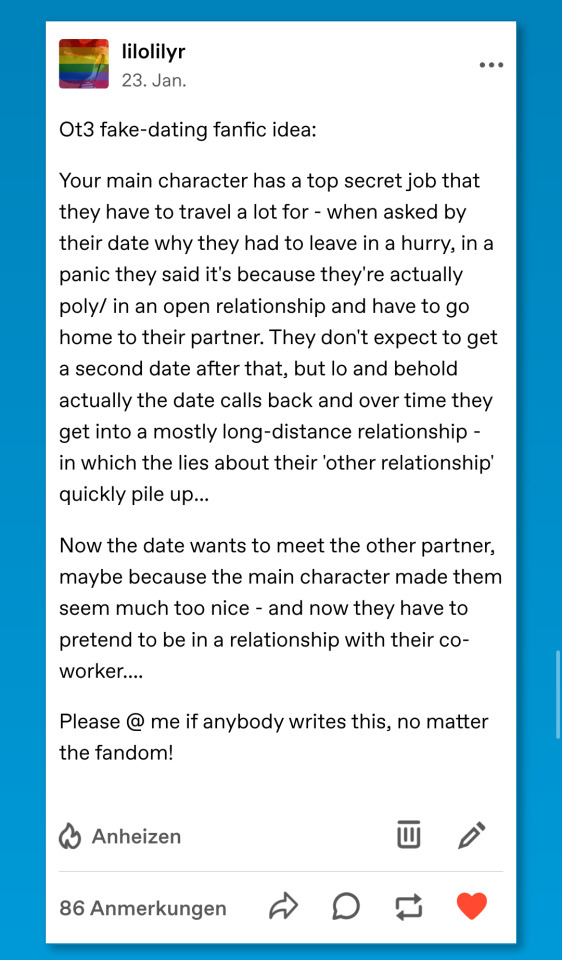
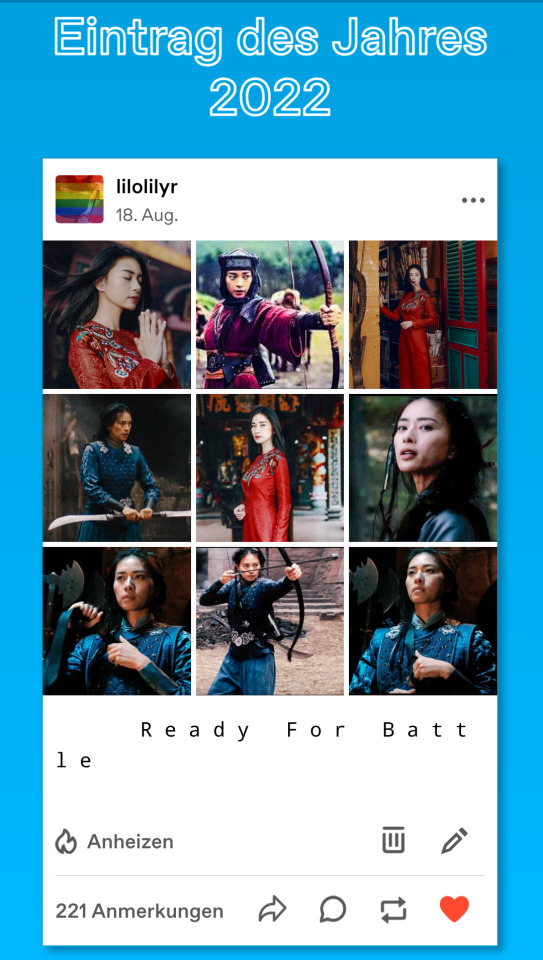
Adsfg that's what happens if the post gets squished small while font size stays the same huh? Well I hope that doesn't happen on many phones without the year in review background... Oh well!
~
My top post results almost got skewed by memeing to 1 thing again! Not as badly as last year with 100% ESC content, but Goncharov definitely made it in xD even though I made most of the posts, all the non Katya/Sofia ones rly, on sideblogs... Thankfully lmao! Also # N°2!!!
Apropos top hashtags, x is my tag to separate rambling from search tags so that's obviously on a lot of posts... & It's cool that Andromaquynh is apparently still my most blogged about, or at least most tagged, ship! Though that it's the only ship in the top 10 is also rather fascinating
& then queen dead - cue crabs! My anti royalty tag combo made it onto the list, in the correct order even xD
And of Course there's threshold day up there as well lmao. Reached post limit for that
~
If you're on mobile and the archive link I put on the '133 posts created' doesn't work, here's one for mobile also including reblog additions and the like, or here's the archive link to copy to your mobile browser:
https://lilolilyr.tumblr.com/archive/2022/12/tagged/my%20post
~
Bc it says, with tags, who you most reblogged from, other ppl then get tagged by these years in review... & I got tagged a lot lmao
Browneyedgenius Frogswithasmallkn1fe Panicatthesocialmedia Banashee Lonely-night Petrichoraflora Purlturtle Falyakonmp3 glassbearclock
Idk whether to be proud or worried that I'm on here too much for my stuff to show up on so many ppls dashs xDxD
& while there are some beloved mutuals and long-time followers on that list, there are also several I've never seen before?? Did they change their urls recently or do they post so little that I never noticed them in my notes even though I'm one of their biggest post suppliers? I may never know xD
Ahh I checked again and @falyakonmp3 @glassbearclock I think I know your sideblogs? TOG fandom for the win :D fits in with that being in my top hashtags twice :) happy you guys enjoy my reblog collection & mayhaps occasional original content!
just one blog mystery left xD frog who are you
Also @purlturtle looks like we reblog a lot from each other! 😄🤗 Mutuals supreme
~
I was gonna say ExcUse YOu tumblr, I gave 2 gifts this year??? Then realized it might have been from a different account
Anyway I gave crabs twice, I wanted to give someone checkmarks for her birthday the second time but that wasn't possible so crabs it was!
I also got a gift once this year, at least I think it was this year? Some months back anyway I got ad-free tumblring for a month!
Anyone want to gift me that again, or crabs for my birthday this weekend? :D
~
That Pikachu ad man made it onto the yir gif is hilarious!
~
& Yes I am back in the country & somewhat back on tumblr, too!
Not too active yet bc uni stuff I need to catch up on, so I'll keep my heading for another week or so, but I'm reachable again 😁
Not that I've been completely out of contact, the Airbnb had wifi and I've uploaded a lot of pics in my insta stories, those who follow me might've seen... But I've been completely off tumblr and discord to enjoy my vacay, even when I did have wifi
#tumblr2022#Jahresrückblick#Mein Tumblr-Jahresrückblick 2022#Dein Tumblr-Jahresrückblick#year in review#my 2022 tumblr year in review#your tumblr year in review#my post#mine#dec'22#15.12.22
4 notes
·
View notes
Link
Jalaiah Harmon is coming up in a dance world completely reshaped by the internet.
She trains in all the traditional ways, taking classes in hip-hop, ballet, lyrical, jazz, tumbling and tap after school at a dance studio near her home in the Atlanta suburbs. She is also building a career online, studying viral dances, collaborating with peers and posting original choreography.
Recently, a sequence of hers turned into one of the most viral dances online: the Renegade.
There’s basically nothing bigger right now. Teenagers are doing the dance in the halls of high schools, at pep rallies and across the internet. Lizzo, Kourtney Kardashian, David Dobrik and members of the K-pop band Stray Kids have all performed it. Charli D’Amelio, TikTok’s biggest homegrown star, with nearly 26 million followers on the platform, has been affectionately deemed the dance’s “C.E.O.” for popularizing it.
But the one person who hasn’t been able to capitalize on the attention is Jalaiah, the Renegade’s 14-year-old creator.
“I was happy when I saw my dance all over,” she said. “But I wanted credit for it.”
TikTok, one of the biggest video apps in the world, has become synonymous with dance culture. Yet many of its most popular dances, including the Renegade, Holy Moly Donut Shop, the Mmmxneil and Cookie Shop have come from young black creators on myriad smaller apps.
Most of these dancers identify as Dubsmashers. This means, in essence, that they use the Dubsmash app and other short-form social video apps, like Funimate, Likee and Triller, to document choreography to songs they love. They then post (or cross-post) the videos to Instagram, where they can reach a wider audience. If it’s popular there, it’s only a matter of time before the dance is co-opted by the TikTok masses.
“TikTok is like a mainstream Dubsmash,” said Kayla Nicole Jones, 18, a YouTube star and music artist. “They take from Dubsmash and they run off with the sauce.”
Polow da Don, a producer, songwriter and rapper who has worked with Usher and Missy Elliott, said: “Dubsmash catches things at the roots when they’re culturally relevant. TikTok is the suburban kids that take things on when it’s already the style and bring it to their community.”
Though Jalaiah is very much a suburban kid herself — she lives in a picturesque home on a quiet street outside of Atlanta — she is part of the young, cutting-edge dance community online that more mainstream influencers co-opt.
The Renegade dance followed this exact path. On Sept. 25, 2019, Jalaiah came home from school and asked a friend she had met through Instagram, Kaliyah Davis, 12, if she wanted to create a post together. Jalaiah listened to the beats in the song “Lottery” by the Atlanta rapper K-Camp and then choreographed a difficult sequence to its chorus, incorporating other viral moves like the wave and the whoa.
She filmed herself and posted it, first to Funimate (where she has more than 1,700 followers) and then to her more than 20,000 followers on Instagram (with a side-by-side shot of Kaliyah and her performing it together).
“I posted on Instagram and it got about 13,000 views, and people started doing it over and over again,” Jalaiah said. In October, a user named @global.jones brought it to TikTok, changing up some of the moves at the end, and the dance spread like wildfire. Before long, Charli D’Amelio had posted a video of herself doing it, as did many other TikTok influencers. None gave Jalaiah credit.
After long days in the ninth grade and between dance classes, Jalaiah tried to get the word out. She hopped in the comments of several videos, asking influencers to tag her. For the most part she was ridiculed or ignored.
She even set up her own TikTok account and created a video of herself in front of a green screen, Googling the question “who created the Renegade dance?” in an attempt to set the record straight. “I was upset,” she said. “It wasn’t fair.”
To be robbed of credit on TikTok is to be robbed of real opportunities. In 2020, virality means income: Creators of popular dances, like the Backpack Kid or Shiggy, often amass large online followings and become influencers themselves. That, in turn, opens the door to brand deals, media opportunities and, most important for Jalaiah, introductions to those in the professional dance and choreography community.
Obtaining credit isn’t easy, though. As the writer Rebecca Jennings noted in Vox in an article about the online dance world’s thorny ethics: “Dances are virtually impossible to legally claim as one’s own.”
But credit and attention are valuable even without legal ownership. “I think I could have gotten money for it, promos for it, I could have gotten famous off it, get noticed,” Jalaiah said. “I don’t think any of that stuff has happened for me because no one knows I made the dance.”
Cross-platform sharing — of dances, of memes, of information — is how things are made on the internet. Popular tweets go viral on Instagram, videos made on Instagram make their way onto YouTube. But in recent years, several large Instagram meme accounts have faced backlash for sharing jokes that went viral without crediting the creator.
TikTok was introduced in the United States only a year and a half ago. Norms, particularly around credit, are still being established. But for Dubsmashers and those in the Instagram dance community, it’s common courtesy to tag the handles of dance creators and musicians, and use hashtags to track the evolution of a dance.
It has set up a culture clash between the two influencer communities. “On TikTok they don’t give people credit,” said Raemoni Johnson, a 15-year-old Dubsmasher. “They just do the video and they don’t tag us.” (This acrimony is exacerbated by the fact that TikTok does not make it easy to find the creator of a dance.)
On Jan. 17, tensions boiled over after Barrie Segal, the head of content at Dubsmash, posted a series of videos asking Charli D’Amelio to give a dance credit to D1 Nayah, a popular Dubsmash dancer with more than one million followers on Instagram, for her Donut Shop dance. TikTok Room, a gossip account on Instagram, picked up the controversy, and spurred a sea of comments.
“Why is it so hard to give black creators their credit,” said one Instagram commenter, referring to the mostly white TikTokers who have taken dances from Dubsmashers and posted them without credit. “Instead of using dubsmash, use tiktok and then ppl would credit you maybe,” a TikToker fan said.
“I’m not an argumentative person on social media — I don’t want beef or anything like that,” said Jhacari Blunt, an 18-year-old Dubsmasher who has had some of his dances co-opted by TikTokers. “But it’s like, we all know where that dance came from.”
At this point, if a TikToker doesn’t initially know who did a dance, commenters will usually tag the original creator’s handle. Charli D’Amelio and other stars have started giving dance credits and tagging creators in their captions.
And the creators who are flooding into TikTok from Instagram and Dubsmash are leading the way by example. “We have 1.7 million followers and we always give credit whether the person has zero followers or not,” said Yoni Wicker, 14, one half of the TheWickerTwinz. “We know how important it is. That person who made that dance, they might be a fan of ours. Us tagging them makes their day.”
Onward and Upward
Stefanie Harmon, Jalaiah’s mother, learned the true extent of Jalaiah’s online success only recently. “She told me, ‘Mommy, I made a dance and it went viral,’” Ms. Harmon said.
“She wasn’t kicking and screaming about the fact that she wasn’t getting credit,” she added, “but I could tell it had affected her. I said, ‘Why do you care whether you’re not getting credit? Just make another one.’”
Jalaiah continues to post a steady stream of dance videos to Funimate, Dubsmash, and Instagram. She said she doesn’t harbor any hard feelings against Charli D’Amelio for popularizing the Renegade without naming her. Instead, she hopes she can collaborate with her one day.
Charli D’Amelio, through a publicist, said that she was “so glad to know” who created the dance. “I know it’s so associated with me,” she said, “but I’m so happy to give Jalaiah credit and I’d love to collaborate with her.”
“We’re all inspired by other people,” Jalaiah said. “We make up a dance and it grows.”
Off the internet, she continues to compete in dance competitions with her studio and hopes to one day take classes at Dance 411, a prestigious dance school in Atlanta. Ultimately, it’s the art form that she loves. “It makes me happy to dance,” she said.
29 notes
·
View notes
Text
Meet the Original Renegade Dance Creator: Jalaiah Harmon
FAYETTEVILLE, Ga. — Jalaiah Harmon is coming up in a dance world completely reshaped by the internet.
She trains in all the traditional ways, taking classes in hip-hop, ballet, lyrical, jazz, tumbling and tap after school at a dance studio near her home in the Atlanta suburbs. She is also building a career online, studying viral dances, collaborating with peers and posting original choreography.
Recently, a sequence of hers turned into one of the most viral dances online: the Renegade.
There’s basically nothing bigger right now. Teenagers are doing the dance in the halls of high schools, at pep rallies and across the internet. Lizzo, Kourtney Kardashian, David Dobrik and members of the K-pop band Stray Kids have all performed it. Charli D’Amelio, TikTok’s biggest homegrown star, with nearly 26 million followers on the platform, has been affectionately deemed the dance’s “C.E.O.” for popularizing it.
But the one person who hasn’t been able to capitalize on the attention is Jalaiah, the Renegade’s 14-year-old creator.
“I was happy when I saw my dance all over,” she said. “But I wanted credit for it.”
The Viral Dance-iearchy
TikTok, one of the biggest video apps in the world, has become synonymous with dance culture. Yet many of its most popular dances, including the Renegade, Holy Moly Donut Shop, the Mmmxneil and Cookie Shop have come from young black creators on myriad smaller apps.
Most of these dancers identify as Dubsmashers. This means, in essence, that they use the Dubsmash app and other short-form social video apps, like Funimate, Likee and Triller, to document choreography to songs they love. They then post (or cross-post) the videos to Instagram, where they can reach a wider audience. If it’s popular there, it’s only a matter of time before the dance is co-opted by the TikTok masses.
“TikTok is like a mainstream Dubsmash,” said Kayla Nicole Jones, 18, a YouTube star and music artist. “They take from Dubsmash and they run off with the sauce.”
Polow da Don, a producer, songwriter and rapper who has worked with Usher and Missy Elliott, said: “Dubsmash catches things at the roots when they’re culturally relevant. TikTok is the suburban kids that take things on when it’s already the style and bring it to their community.”
Though Jalaiah is very much a suburban kid herself — she lives in a picturesque home on a quiet street outside of Atlanta — she is part of the young, cutting-edge dance community online that more mainstream influencers co-opt.
The Renegade dance followed this exact path. On Sept. 25, 2019, Jalaiah came home from school and asked a friend she had met through Instagram, Kaliyah Davis, 12, if she wanted to create a post together. Jalaiah listened to the beats in the song “Lottery” by the Atlanta rapper K-Camp and then choreographed a difficult sequence to its chorus, incorporating other viral moves like the wave and the whoa.
She filmed herself and posted it, first to Funimate (where she has more than 1,700 followers) and then to her more than 20,000 followers on Instagram (with a side-by-side shot of Kaliyah and her performing it together).
“I posted on Instagram and it got about 13,000 views, and people started doing it over and over again,” Jalaiah said. In October, a user named @global.jones brought it to TikTok, changing up some of the moves at the end, and the dance spread like wildfire. Before long, Charli D’Amelio had posted a video of herself doing it, as did many other TikTok influencers. None gave Jalaiah credit.
After long days in the ninth grade and between dance classes, Jalaiah tried to get the word out. She hopped in the comments of several videos, asking influencers to tag her. For the most part she was ridiculed or ignored.
She even set up her own TikTok account and created a video of herself in front of a green screen, Googling the question “who created the Renegade dance?” in an attempt to set the record straight. “I was upset,” she said. “It wasn’t fair.”
To be robbed of credit on TikTok is to be robbed of real opportunities. In 2020, virality means income: Creators of popular dances, like the Backpack Kid or Shiggy, often amass large online followings and become influencers themselves. That, in turn, opens the door to brand deals, media opportunities and, most important for Jalaiah, introductions to those in the professional dance and choreography community.
Obtaining credit isn’t easy, though. As the writer Rebecca Jennings noted in Vox in an article about the online dance world’s thorny ethics: “Dances are virtually impossible to legally claim as one’s own.”
But credit and attention are valuable even without legal ownership. “I think I could have gotten money for it, promos for it, I could have gotten famous off it, get noticed,” Jalaiah said. “I don’t think any of that stuff has happened for me because no one knows I made the dance.”
Scares of the Share Economy
Cross-platform sharing — of dances, of memes, of information — is how things are made on the internet. Popular tweets go viral on Instagram, videos made on Instagram make their way onto YouTube. But in recent years, several large Instagram meme accounts have faced backlash for sharing jokes that went viral without crediting the creator.
TikTok was introduced in the United States only a year and a half ago. Norms, particularly around credit, are still being established. But for Dubsmashers and those in the Instagram dance community, it’s common courtesy to tag the handles of dance creators and musicians, and use hashtags to track the evolution of a dance.
It has set up a culture clash between the two influencer communities. “On TikTok they don’t give people credit,” said Raemoni Johnson, a 15-year-old Dubsmasher. “They just do the video and they don’t tag us.” (This acrimony is exacerbated by the fact that TikTok does not make it easy to find the creator of a dance.)
On Jan. 17, tensions boiled over after Barrie Segal, the head of content at Dubsmash, posted a series of videos asking Charli D’Amelio to give a dance credit to D1 Nayah, a popular Dubsmash dancer with more than one million followers on Instagram, for her Donut Shop dance. TikTok Room, a gossip account on Instagram, picked up the controversy, and spurred a sea of comments.
“Why is it so hard to give black creators their credit,” said one Instagram commenter, referring to the mostly white TikTokers who have taken dances from Dubsmashers and posted them without credit. “Instead of using dubsmash, use tiktok and then ppl would credit you maybe,” a TikToker fan said.
“I’m not an argumentative person on social media — I don’t want beef or anything like that,” said Jhacari Blunt, an 18-year-old Dubsmasher who has had some of his dances co-opted by TikTokers. “But it’s like, we all know where that dance came from.”
At this point, if a TikToker doesn’t initially know who did a dance, commenters will usually tag the original creator’s handle. Charli D’Amelio and other stars have started giving dance credits and tagging creators in their captions.
And the creators who are flooding into TikTok from Instagram and Dubsmash are leading the way by example. “We have 1.7 million followers and we always give credit whether the person has zero followers or not,” said Yoni Wicker, 14, one half of the TheWickerTwinz. “We know how important it is. That person who made that dance, they might be a fan of ours. Us tagging them makes their day.”
Onward and Upward
Stefanie Harmon, Jalaiah’s mother, learned the true extent of Jalaiah’s online success only recently. “She told me, ‘Mommy, I made a dance and it went viral,’” Ms. Harmon said.
“She wasn’t kicking and screaming about the fact that she wasn’t getting credit,” she added, “but I could tell it had affected her. I said, ‘Why do you care whether you’re not getting credit? Just make another one.’”
Jalaiah continues to post a steady stream of dance videos to Funimate, Dubsmash, and Instagram. She said she doesn’t harbor any hard feelings against Charli D’Amelio for popularizing the Renegade without naming her. Instead, she hopes she can collaborate with her one day.
Charli D’Amelio, through a publicist, said that she was “so glad to know” who created the dance. “I know it’s so associated with me,” she said, “but I’m so happy to give Jalaiah credit and I’d love to collaborate with her.”
“We’re all inspired by other people,” Jalaiah said. “We make up a dance and it grows.”
Off the internet, she continues to compete in dance competitions with her studio and hopes to one day take classes at Dance 411, a prestigious dance school in Atlanta. Ultimately, it’s the art form that she loves. “It makes me happy to dance,” she said.
from WordPress https://mastcomm.com/life-style/meet-the-original-renegade-dance-creator-jalaiah-harmon/
0 notes
Text
The Original Renegade – The New York Times
FAYETTEVILLE, Ga. — Jalaiah Harmon is coming up in a dance world completely reshaped by the internet.
She trains in all the traditional ways, taking classes in hip-hop, ballet, lyrical, jazz, tumbling and tap after school at a dance studio near her home in the Atlanta suburbs. She is also building a career online, studying viral dances, collaborating with peers and posting original choreography.
Recently, a sequence of hers turned into one of the most viral dances online: the Renegade.
There’s basically nothing bigger right now. Teenagers are doing the dance in the halls of high schools, at pep rallies and across the internet. Lizzo, Kourtney Kardashian, David Dobrik and members of the K-pop band Stray Kids have all performed it. Charli D’Amelio, TikTok’s biggest homegrown star, with nearly 26 million followers on the platform, has been affectionately deemed the dance’s “C.E.O.” for popularizing it.
But the one person who hasn’t been able to capitalize on the attention is Jalaiah, the Renegade’s 14-year-old creator.
“I was happy when I saw my dance all over,” she said. “But I wanted credit for it.”
The Viral Dance-iearchy
TikTok, one of the biggest video apps in the world, has become synonymous with dance culture. Yet many of its most popular dances, including the Renegade, Holy Moly Donut Shop, the Mmmxneil and Cookie Shop have come from young black creators on myriad smaller apps.
Most of these dancers identify as Dubsmashers. This means, in essence, that they use the Dubsmash app and other short-form social video apps, like Funimate, Likee and Triller, to document choreography to songs they love. They then post (or cross-post) the videos to Instagram, where they can reach a wider audience. If it’s popular there, it’s only a matter of time before the dance is co-opted by the TikTok masses.
“TikTok is like a mainstream Dubsmash,” said Kayla Nicole Jones, 18, a YouTube star and music artist. “They take from Dubsmash and they run off with the sauce.”
Polow da Don, a producer, songwriter and rapper who has worked with Usher and Missy Elliott, said: “Dubsmash catches things at the roots when they’re culturally relevant. TikTok is the suburban kids that take things on when it’s already the style and bring it to their community.”
Though Jalaiah is very much a suburban kid herself — she lives in a picturesque home on a quiet street outside of Atlanta — she is part of the young, cutting-edge dance community online that more mainstream influencers co-opt.
The Renegade dance followed this exact path. On Sept. 25, 2019, Jalaiah came home from school and asked a friend she had met through Instagram, Kaliyah Davis, 12, if she wanted to create a post together. Jalaiah listened to the beats in the song “Lottery” by the Atlanta rapper K-Camp and then choreographed a difficult sequence to its chorus, incorporating other viral moves like the wave and the whoa.
She filmed herself and posted it, first to Funimate (where she has more than 1,700 followers) and then to her more than 20,000 followers on Instagram (with a side-by-side shot of Kaliyah and her performing it together).
“I posted on Instagram and it got about 13,000 views, and people started doing it over and over again,” Jalaiah said. In October, a user named @global.jones brought it to TikTok, changing up some of the moves at the end, and the dance spread like wildfire. Before long, Charli D’Amelio had posted a video of herself doing it, as did many other TikTok influencers. None gave Jalaiah credit.
After long days in the ninth grade and between dance classes, Jalaiah tried to get the word out. She hopped in the comments of several videos, asking influencers to tag her. For the most part she was ridiculed or ignored.
She even set up her own TikTok account and created a video of herself in front of a green screen, Googling the question “who created the Renegade dance?” in an attempt to set the record straight. “I was upset,” she said. “It wasn’t fair.”
To be robbed of credit on TikTok is to be robbed of real opportunities. In 2020, virality means income: Creators of popular dances, like the Backpack Kid or Shiggy, often amass large online followings and become influencers themselves. That, in turn, opens the door to brand deals, media opportunities and, most important for Jalaiah, introductions to those in the professional dance and choreography community.
Obtaining credit isn’t easy, though. As the writer Rebecca Jennings noted in Vox in an article about the online dance world’s thorny ethics: “Dances are virtually impossible to legally claim as one’s own.”
But credit and attention are valuable even without legal ownership. “I think I could have gotten money for it, promos for it, I could have gotten famous off it, get noticed,” Jalaiah said. “I don’t think any of that stuff has happened for me because no one knows I made the dance.”
Scares of the Share Economy
Cross-platform sharing — of dances, of memes, of information — is how things are made on the internet. Popular tweets go viral on Instagram, videos made on Instagram make their way onto YouTube. But in recent years, several large Instagram meme accounts have faced backlash for sharing jokes that went viral without crediting the creator.
TikTok, which was introduced in the United States only a year and a half ago. Norms, particularly around credit, are still being established. But for Dubsmashers and those in the Instagram dance community, it’s common courtesy to tag the handles of dance creators and musicians, and use hashtags to track the evolution of a dance.
It has set up a culture clash between the two influencer communities. “On TikTok they don’t give people credit,” said Raemoni Johnson, a 15-year-old Dubsmasher. “They just do the video and they don’t tag us.” (This acrimony is exacerbated by the fact that TikTok does not make it easy to find the creator of a dance.)
On Jan. 17, tensions boiled over after Barrie Segal, the head of content at Dubsmash, posted a series of videos asking Charli D’Amelio to give a dance credit to D1 Nayah, a popular Dubsmash dancer with more than one million followers on Instagram, for her Donut Shop dance. TikTok Room, a gossip account on Instagram, picked up the controversy, and spurred a sea of comments.
“Why is it so hard to give black creators their credit,” said one Instagram commenter, referring to the mostly white TikTokers who have taken dances from Dubsmashers and posted them without credit. “Instead of using dubsmash, use tiktok and then ppl would credit you maybe,” a TikToker fan said.
“I’m not an argumentative person on social media — I don’t want beef or anything like that,” said Jhacari Blunt, an 18-year-old Dubsmasher who has had some of his dances co-opted by TikTokers. “But it’s like, we all know where that dance came from.”
At this point, if a TikToker doesn’t initially know who did a dance, commenters will usually tag the original creator’s handle. Charli D’Amelio and other stars have started giving dance credits and tagging creators in their captions.
And the creators who are flooding into TikTok from Instagram and Dubsmash are leading the way by example. “We have 1.7 million followers and we always give credit whether the person has zero followers or not,” said Yoni Wicker, 14, one half of the TheWickerTwinz. “We know how important it is. That person who made that dance, they might be a fan of ours. Us tagging them makes their day.”
Onward and Upward
Stephanie Harmon, Jalaiah’s mother, learned the true extent of Jalaiah’s online success only recently. “She told me, ‘Mommy, I made a dance and it went viral,’” Ms. Harmon said.
“She wasn’t kicking and screaming about the fact that she wasn’t getting credit,” she added, “but I could tell it had affected her. I said, ‘Why do you care whether you’re not getting credit? Just make another one.’”
Jalaiah continues to post a steady stream of dance videos to Funimate, Dubsmash, and Instagram. She said she doesn’t harbor any hard feelings against Charli D’Amelio for popularizing the Renegade without naming her. Instead, she hopes she can collaborate with her one day.
Charli D’Amelio, through a publicist, said that she was “so glad to know” who created the dance. “I know it’s so associated with me,” she said, “but I’m so happy to give Jalaiah credit.”
“We’re all inspired by other people,” Jalaiah said. “We make up a dance and it grows.”
Off the internet, she continues to compete in dance competitions with her studio and hopes to one day take classes at Dance 411, a prestigious dance school in Atlanta. Ultimately, it’s the art form that she loves. “It makes me happy to dance,” she said.
from WordPress https://mastcomm.com/the-original-renegade-the-new-york-times/
0 notes